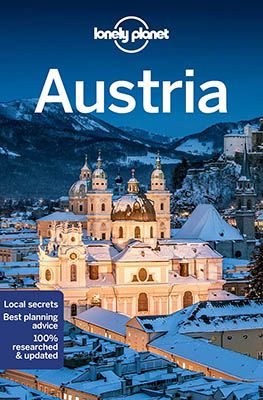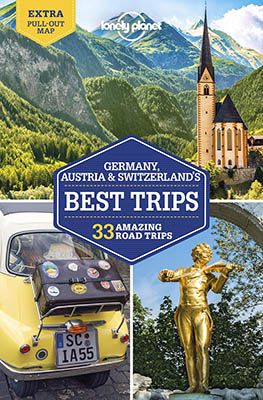Mentioning the destination ‘Linz’ raises the question for many people of where this city is located. In Austria, yes, but where exactly? The region of ‘Oberösterreich’, of which Linz is the capital, is not widely known to most Dutch people. But a city doesn’t just become a UNESCO World Heritage Site for no reason. This third-largest city in Austria has more to offer than you might think. In 2024, they will celebrate the 200th birthday of the composer Anton Bruckner here. We are excited to be surprised during a varied tour. We would like to take you on a journey through this city of art and culture.


Linz, city of Bruckner and technology
Mozart was born in Salzburg and died in Vienna. In between lies Linz. It is in this area that the composer Anton Bruckner (1824 – 1896) grew up. At the age of 31, he became the organist at the Linz Cathedral. Bruckner’s birth year is the reason why this composer has been chosen as the theme of the city this year. Our city tour starts at the Mariendom under the energetic guidance of city guide Angela. She leads us through the charming center on a (somewhat rainy) day in May. We find ourselves in hidden alleys, walk past beautiful buildings, and discover unique shops. The Danube, or Donau as it is called here, is always present, adding extra charm and grandeur to the city. So even on a somewhat drizzly day, the city manages to captivate and charm us.

Linz city center
As mentioned, our city visit starts at the Mariendom. Next to this church, we find a stone with an image of Bruckner. It is one of the largest churches in Austria, a quiet place from which we walk towards the central square, Hauptplatz. Along the way, we pass numerous unique shops. We visit the workshop and shop of Fabian Almesberger, who makes jewelry from stones from the Danube. Original and skillful work. The area is also notable for its many art shops, which are interspersed with restaurants and fashionable stores. Traditional Austrian clothing is also abundantly available here.


We pass by the homes of a few luminaries of science. Doppler, the inventor of the Doppler effect, lived here in Linz. Our guide gives a demonstration of this effect with her voice on the spot, allowing us to experience the change in pitch. Angela is an energetic lady. We also pass by the house of the astrologer and mathematician Kepler. Linz has named its university after this famous scientist from the 1600s.

Linzer Torte
The central square with beautiful baroque buildings is close to the Danube. It is one of the largest squares in Europe. With its many cafes and restaurants, it is an ideal place for coffee or lunch. Don’t forget to try the Linzer Torte with your coffee. It’s a delicacy that is a must-try when visiting the city by the Danube.

We walk to the Schlossmuseum, where we have a beautiful view of the city. In the distance, we see the steelworks of Voestalpine. An important employer in this region, once born out of the Second World War. It is an indirect reference to the ties Hitler had with this city. He attended high school here and lived in the immediate vicinity. He gave a speech on the ‘Anschluss’ of Austria from the balcony of the town hall. Adolf Eichmann, the man behind the persecution of the Jews, also grew up here. It’s a piece of history that the city is less proud of. But as guide Angela says, it is still part of it.

Climbing the Pöstlingberg
From the central square, a historic tram departs towards Pöstlingberg. The 539-meter-high hill is conquered in twenty minutes by this ‘mountain railway‘. It’s a steep climb that is done without rack-and-pinion technology. Once at the top, we have a panoramic view. We are actually walking along a rampart that served to protect the city. At the top of the mountain stands the Pöstlingberg Church, known as a pilgrimage basilica. It’s worth taking a look inside. There are various themed corners. Below the church is a somewhat hidden cellar or crypt. Everything is freely accessible.


The adjacent Dwarf Kingdom is more of a pilgrimage for children. On this rainy day, children are certainly well represented to visit the ‘kingdom’. In a cave-like designed park, many statues of fairytale characters are found. Sometimes a bit scary for children (and adults, according to our guide).

The Ars Electronica Center on the Danube
We have set aside two hours for this visit to the electronics museum. There is much to see, hear, and experience in this modern building located on the banks of the Danube.
Upon arrival, the guide asks us about the shape of the museum. It turns out to be a ship: “You only see it when you get it.” We enter the world of 3D printing and see the latest developments in this technique.

Then a 3D light show starts, taking us into images that fully embrace us. There are photos that can be zoomed in countless times. Especially the panoramic photo of the city of Paris makes you realize how far one can go with magnification. We see the distant Eiffel Tower, which is magnified to the nuts and bolts of the construction. Impressive.
Afterwards, we enter a room with a beautiful grand piano. In front of it is a keyboard. If you play on it, the keys of the grand piano move. It is the beginning of a demonstration about the control of instruments. The guide plays ‘Claire de Lune’ by Debussy on the grand piano. If we want the tempo to be a bit faster or perhaps less ‘classical’? The instrument is directed with an iPad. So with this technique, a pianist can play several pianos. Imagine hearing a piano live in Amsterdam and seeing the keys move, played by someone in Vienna.
But even after being informed that the museum is closing, we find it difficult to leave. Because there is so much to see. So two hours have proven to be too short.

General impression
We visited Linz after a tour of Upper Austria to conclude our introduction to this region. And we “thoroughly enjoyed” Linz! We would have liked to stay there for an extra day. The city boasts beautiful buildings, a pleasant relaxed atmosphere, and a surprisingly diverse shopping offering. What was missing from our brief stay was a visit to the port area, which serves as an open-air exhibition for over 300 graffiti artworks and has become a true attraction. So, we would love to come back to Linz!
But the district of Upper Austria has much more to offer than just the city of Linz. In our blog about the Upper Austria region (to be published soon), you will learn how to combine a visit to this city with visiting places in the surrounding area that are well worth the visit.
FAQs about visiting Linz
Linz is located in the northeastern part of Austria, between Salzburg and Vienna.
The center of Linz is easily walkable. In addition, there is a good network of trams and buses. Tickets can be purchased from ticket machines, tobacco shops, and the Linz AG Linien info center at Hauptplatz 34. Don't forget to validate tickets on the tram or bus.
The following activities are highly recommended:
- Ars Electronica Museum: museum of the future
- Hauptplatz and the old town: the central square with coffee houses and shops
- Mariendom: largest church in Austria and its connection with Bruckner
- Altstadt and the Schlossmuseum: modern architecture and overview of the city
- The tram to the Pöstlingberg: Fun tram ride to the pilgrimage basilica
- Mural Harbour: over 100 graffiti artworks
Linz has a reasonable selection of good hotels at a more than reasonable rate by our standards. Here is an overview of accommodations in Linz.
The city has many restaurants, coffee houses, and bars. For suggestions, see the 10 best restaurants in Linz according to Tripadvisor.
From the center on the central square, the tram to the Pöstlingberg departs. Here, you can visit the pilgrimage church and the adjacent Dwarf Kingdom. There is also a restaurant with a beautiful view of the city.
More information about the state of Upper Austria can be found at upperaustria.com/en. More information about Linz can be found at linztourismus.at/en.
We visited the city of Linz at the invitation of Upper Austria Tourism. The content of this blog has been compiled independently and objectively based on our own impressions.



